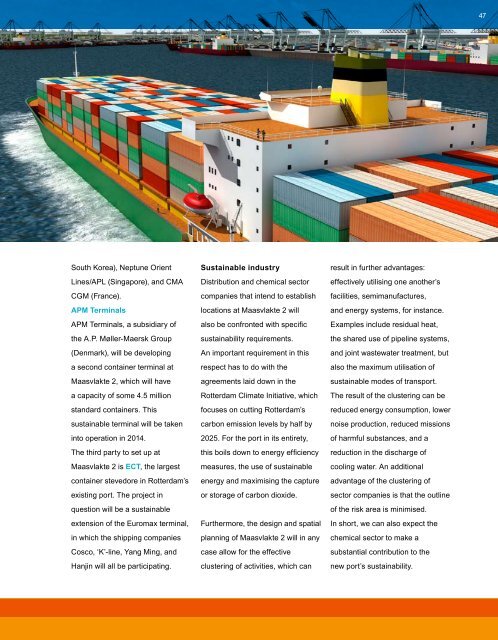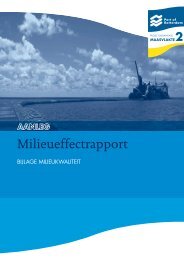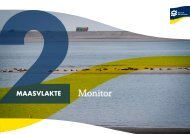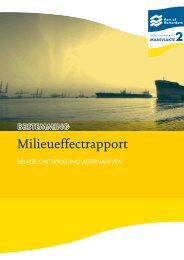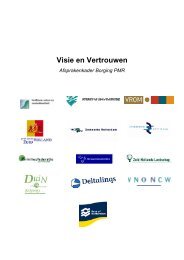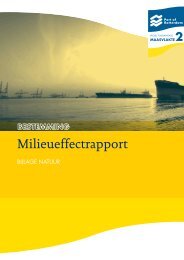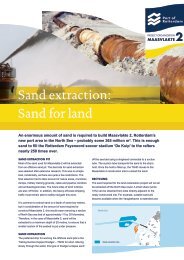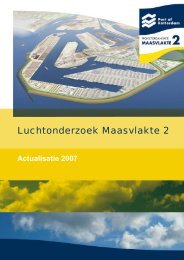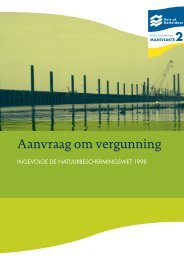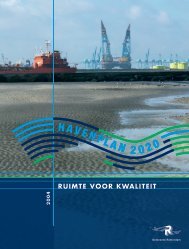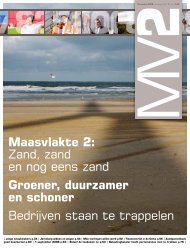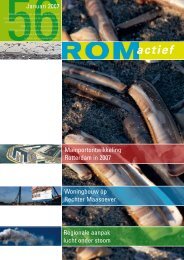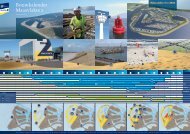Maasvlakte 2 The sustainable port (pdf, 6427Kb)
Maasvlakte 2 The sustainable port (pdf, 6427Kb)
Maasvlakte 2 The sustainable port (pdf, 6427Kb)
- No tags were found...
Create successful ePaper yourself
Turn your PDF publications into a flip-book with our unique Google optimized e-Paper software.
47South Korea), Neptune OrientLines/APL (Singapore), and CMACGM (France).APM TerminalsAPM Terminals, a subsidiary ofthe A.P. Møller-Maersk Group(Denmark), will be developinga second container terminal at<strong>Maasvlakte</strong> 2, which will havea capacity of some 4.5 millionstandard containers. This<strong>sustainable</strong> terminal will be takeninto operation in 2014.<strong>The</strong> third party to set up at<strong>Maasvlakte</strong> 2 is ECT, the largestcontainer stevedore in Rotterdam’sexisting <strong>port</strong>. <strong>The</strong> project inquestion will be a <strong>sustainable</strong>extension of the Euromax terminal,in which the shipping companiesCosco, ‘K’-line, Yang Ming, andHanjin will all be participating.Sustainable industryDistribution and chemical sectorcompanies that intend to establishlocations at <strong>Maasvlakte</strong> 2 willalso be confronted with specificsustainability requirements.An im<strong>port</strong>ant requirement in thisrespect has to do with theagreements laid down in theRotterdam Climate Initiative, whichfocuses on cutting Rotterdam’scarbon emission levels by half by2025. For the <strong>port</strong> in its entirety,this boils down to energy efficiencymeasures, the use of <strong>sustainable</strong>energy and maximising the captureor storage of carbon dioxide.Furthermore, the design and spatialplanning of <strong>Maasvlakte</strong> 2 will in anycase allow for the effectiveclustering of activities, which canresult in further advantages:effectively utilising one another’sfacilities, semimanufactures,and energy systems, for instance.Examples include residual heat,the shared use of pipeline systems,and joint wastewater treatment, butalso the maximum utilisation of<strong>sustainable</strong> modes of trans<strong>port</strong>.<strong>The</strong> result of the clustering can bereduced energy consumption, lowernoise production, reduced missionsof harmful substances, and areduction in the discharge ofcooling water. An additionaladvantage of the clustering ofsector companies is that the outlineof the risk area is minimised.In short, we can also expect thechemical sector to make asubstantial contribution to thenew <strong>port</strong>’s sustainability.


